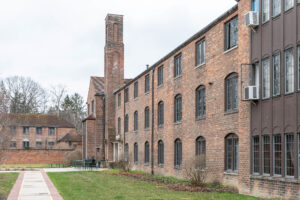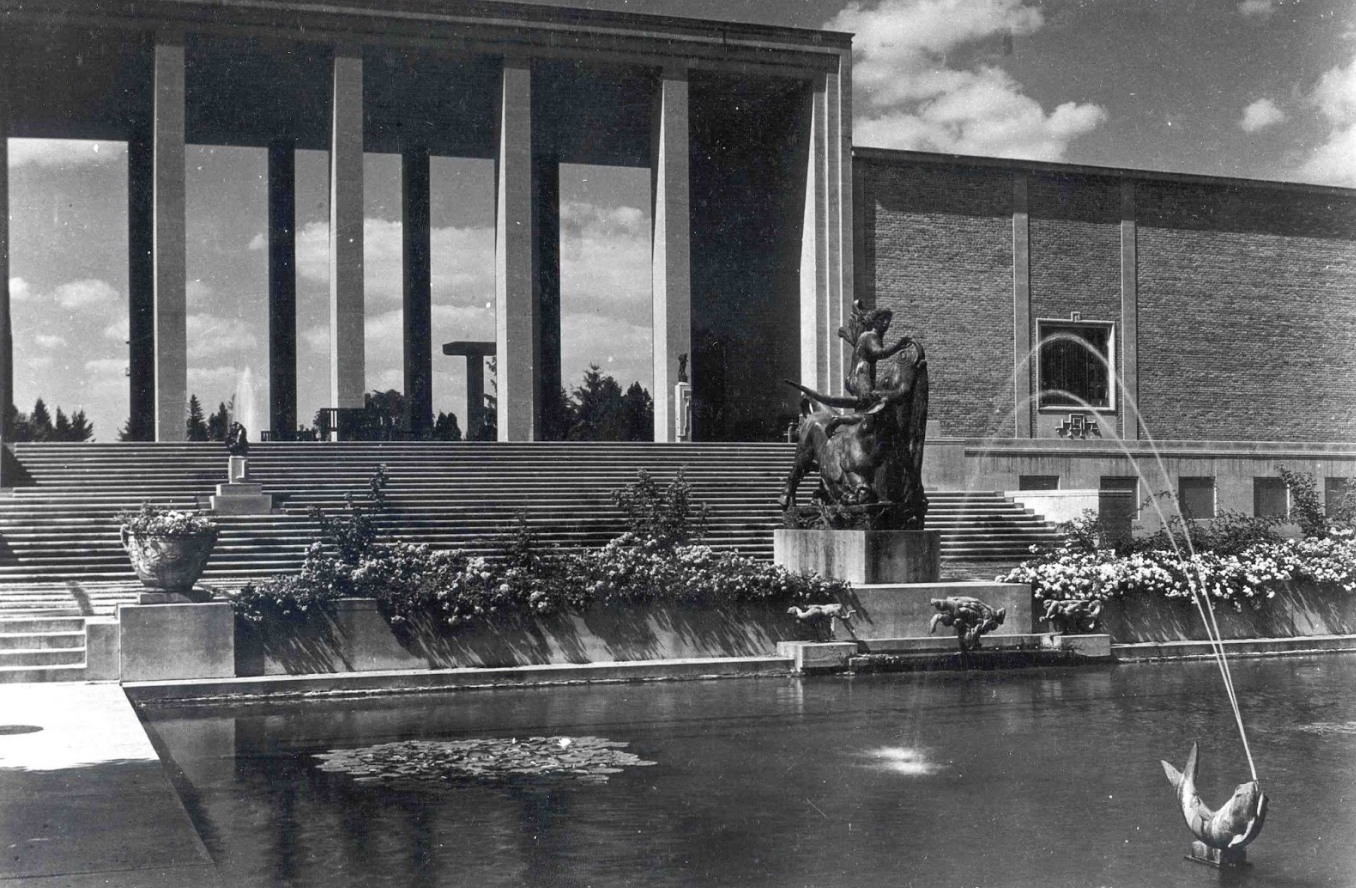Connections often happen in the places where we least expect to find them. At Optima®, a connection sprang from a love of modernization, to an idea, backed by an ever-lasting willingness to adapt through experimentation in the right place, at the right time. Imagine our surprise when a number of world renown architects and designers such as Florence Knoll, Charles and Ray Eames, Eero Saarinen, and Harry Bertoia met at Cranbrook Academy of Art at the right place, at the right time, becoming colleagues, collaborators, and lifelong friends.
The Cranbrook Campus was designed by Eliel Saarinen in the years 1925-1942. He also had help from his wife and artist, Loja, and his kids, Eero and Pipsan at the request of founders — George and Ellen Booth. Everything on campus was highly considered — from the masonry, to the walls, the chairs, textiles, and colors through the use of what they called — total design. When Eero Saarinen, Florence Knoll, Charles and Ray Eames, and Harry Bertoia were on campus, Cranbrook was essentially a crucible for the beginnings of modernism in which many of these luminary architects and designers practiced and perfected their craft.

In late 2022, the design studio at Herman Miller released a short film entitled, The Cranbrook Connection. The film traces the history of Cranbrook as one of America’s greatest examples of modernist architecture and design, weaving in a thoughtful examination of furniture designed and produced by mid-century visionaries for Herman Miller and Knoll. This sweeping survey brings into sharp focus the staying power of total design, while inspiring us with the power of bringing structure and interior space into harmonic alignment.
During these seminal years, Cranbrook encouraged its students to practice experimentation in design, alongside the use of new materials. Eero and Charles had an interesting obsession with plywood. How it bent, how it felt, and sat in space. They later entered into a number of competitions with and sometimes against one another using this material. At one point, they entered the Organic Design for Home Furnishings competition with a suite of modular furniture using molded plywood chairs, and tables that would come to be the seeds of some of the most successful lines of furniture such as the Eames chair, and Womb chair.

Today, the Cranbrook Academy of Art remains one of the country’s top-ranked, graduate-only programs in architecture, design, and fine art. Just 75 students are invited to study and live on the Saarinen-designed campus, which features a suite of private studios, state-of-the-art workshops, a renowned Art Museum, and 300 acres of forests, lakes, and streams, all a short drive from Detroit. The focus at Cranbrook is on studio practice in one of 11 disciplines: Architecture, 2D, 3D, and 4D Design, Ceramics, Fiber, Metalsmithing, Painting, Photography, Print Media, and Sculpture.

